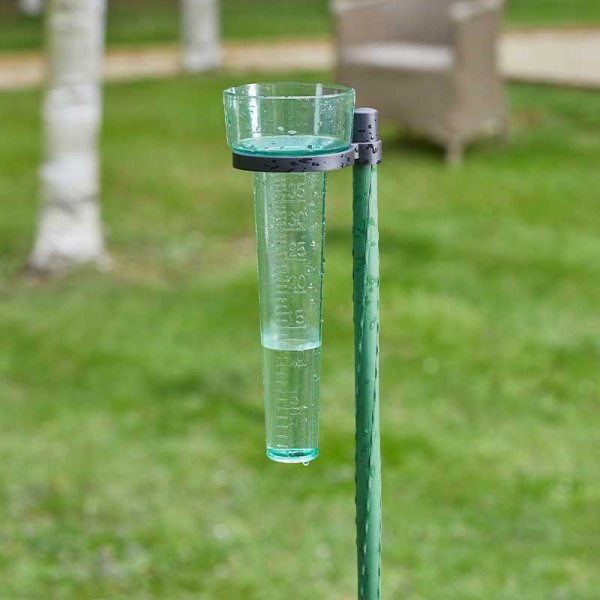Unveiling the Scientific Research Behind Rain Determines: How These Devices Play a Crucial Function in Climate Study and Ecological Surveillance
Rainfall assesses, relatively basic tools, hold a profound significance in the world of climate study and ecological tracking. These unassuming instruments silently collect among nature's most important components-- rains. Behind their unpretentious exterior lies a complex scientific research that is indispensable for recognizing the characteristics of our atmosphere. As we peel back the layers of this scientific shroud surrounding rain determines, we uncover a globe where precision, information precision, and careful monitoring merge to reveal a much deeper understanding of our transforming environment and its impact on the planet.
Value of Rain Gauges
Rainfall gauges play an essential function in tracking and determining rainfall levels, giving necessary information for environment research and evaluation. These gadgets are basic in measuring the amount of rainfall that occurs in a particular location over a specific duration. By accumulating and gauging rainwater, rainfall evaluates offer valuable understandings into the circulation and strength of rainfall, assisting meteorologists, hydrologists, and climatologists in understanding climate patterns and fads.
Among the essential reasons why rainfall gauges are important is their capability to offer localized and accurate information. Unlike satellite or radar-based dimensions, which supply broader monitorings, rain determines deal specific info details to the place where they are positioned. This local information is essential for different applications, including flood projecting, drought surveillance, and water source monitoring. Furthermore, long-lasting data accumulated from rain gauges aids in examining environment adjustment impacts and patterns, contributing considerably to clinical research study and decision-making procedures. Fundamentally, rain assesses serve as vital devices in the field of weather forecasting and ecological science, playing an essential duty ahead of time our understanding of weather and environment dynamics.
Sorts Of Rain Scales

Performance and Procedure
In the world of environment study and meteorological research studies, the efficiency of rain evaluates lies in their elaborate performance and accurate operational systems. Rainfall gauges are developed to properly gauge the quantity of precipitation that falls over a particular area during a collection period. next page These tools usually include a channel that gathers rainwater and networks it right into a determining tube. The determining tube is noted with adjusted measurements that allow for the precise quantification of rains.
The capability of rainfall evaluates is based on the principle of accumulating and gauging rainwater in a standard fashion. This gathered information is critical for understanding regional climate patterns, tracking long-lasting environment fads, and analyzing directory environmental impacts. To ensure precise measurements, rain evaluates need to be purposefully placed in open areas far from obstructions such as buildings or trees that can disrupt the collection procedure.
The operational aspect of rainfall determines involves normal maintenance to avoid particles buildup, calibration checks to preserve measurement precision, and data taping for analysis (rain gauge). Generally, the capability and operation of rain determines are important for collecting trusted rainfall information important to climate study and ecological surveillance
Duty in Climate Research Study
Provided the vital importance of precise rainfall dimensions in comprehending climate patterns and ecological effects, the function of rain gauges in climate research study is essential. Rainfall determines give important data for environment research by quantifying the amount of precipitation that falls over a details location throughout a given duration. This data is essential for keeping an eye on lasting trends in precipitation patterns, analyzing the effect of climate adjustment on rainfall circulation, and enhancing climate models.

Environment scientists use data collected from rainfall assesses to evaluate variants in precipitation levels, determine local climate trends, and assess the performance of water resource administration methods. By comparing historical precipitation data with present dimensions, researchers can identify shifts in precipitation patterns, such as modifications in the frequency or intensity of rainfall events. This details is important for comprehending just how environment adjustment is influencing precipitation characteristics and can help policymakers make informed choices pertaining to adjustment and reduction techniques.
Applications in Environmental Tracking

In flooding forecasting, rainfall scale data aids to track rains strength and circulation, allowing authorities to provide prompt warnings and take necessary actions to reduce flooding dangers (rain gauge). Dry spell surveillance relies upon rainfall gauge information to assess dampness levels in the dirt and track precipitation deficiencies, assisting in the recognition of drought-prone areas and the implementation of dry spell reaction strategies
In addition, rainfall gauge information plays why not find out more a crucial role in water resource administration by offering details on water availability and usage patterns. This information is utilized to make enlightened decisions concerning water allocation, conservation actions, and sustainable water resource preparation. In addition, in farming, rain scale information assists farmers in optimizing irrigation timetables, crop option, and overall ranch management techniques based on regional precipitation patterns. Generally, rainfall evaluates are vital tools in environmental tracking, providing valuable understandings that contribute to notified decision-making and sustainable source management.
Conclusion
In conclusion, rain assesses are important devices for measuring precipitation, offering useful information for climate study and environmental surveillance. With different kinds and functionalities, rain determines play a critical role in understanding rainfall patterns and their influence on the atmosphere. By accurately measuring rainfall, these tools add to the innovation of clinical understanding and help in making educated decisions related to water source administration and catastrophe readiness.
Rain gauges play an indispensable role in tracking and measuring rainfall degrees, offering essential information for climate research study and evaluation. The typical rainfall gauge, known as the "tipping container" scale, is one of the most typically used devices. Ultrasonic rainfall determines usage audio waves to identify the existence of rainfall, giving real-time information on rainfall degrees.Environment researchers make use of information collected from rain evaluates to examine variations in rainfall levels, identify local climate patterns, and review the performance of water resource management techniques.In conclusion, rainfall evaluates are necessary tools for determining precipitation, supplying useful data for environment research and environmental monitoring.